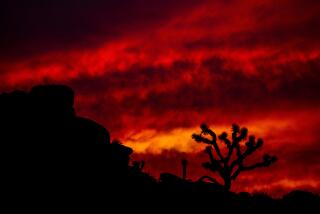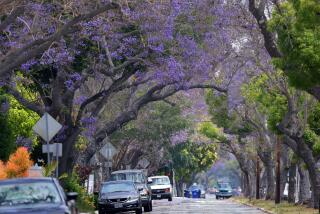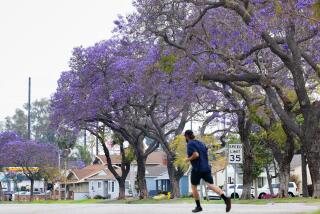It’s jacaranda season: When purple reigns
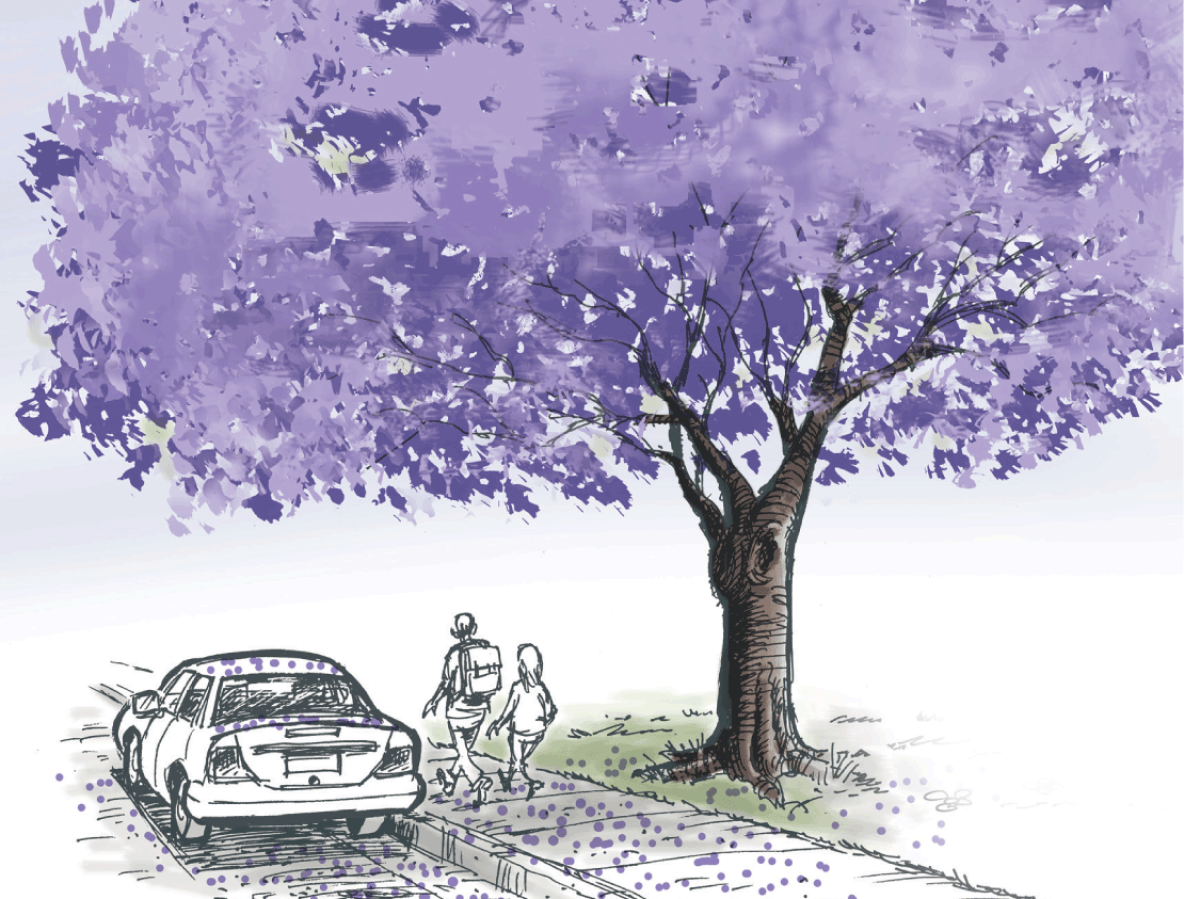
When spring’s warm sun slackens winter’s chilly grip, Angelenos count on their streets being punctuated with neon purple jacaranda trees — as much a trademark of this region as the cherry blossoms in Washington, D.C.
Seen from elevated freeways, puffy clouds of purple appear to hover over neighborhoods. The bloom sometimes begins in March, but can usually be depended on from April through June. The trees’ color is especially vibrant against Southern California’s May gray skies.
L.A.’s oldest jacarandas are 80 to 100 years old, and there are estimated to be some 20,000 of them along public streets in the city. Pasadena maintains an estimated 1,654 jacarandas.
L.A.’s cherry blossoms
The scientific name for them is Jacaranda mimosifolia. They originated in Brazil, Argentina and Bolivia, and tend to be 25 to 40 feet tall and can be just as wide.
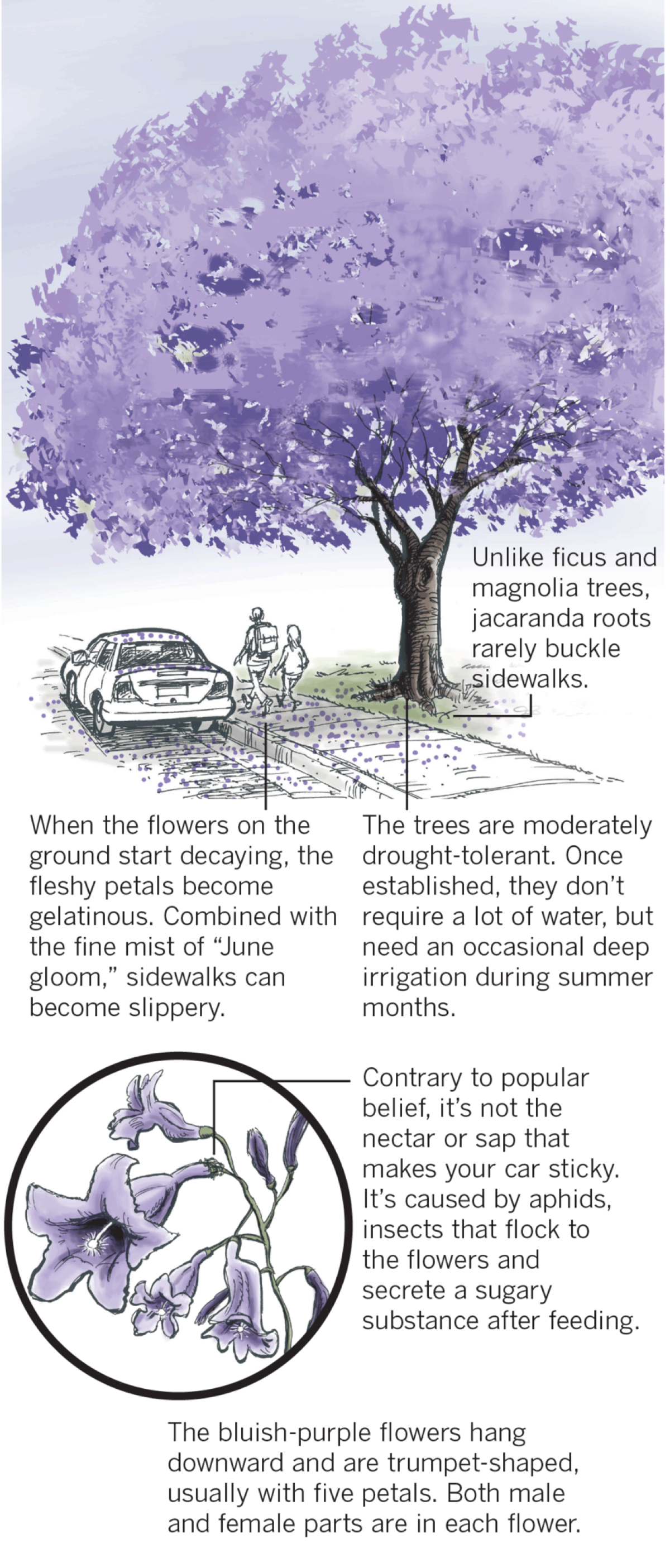
Typical ‘bloom cycle’ of a jacaranda tree
A subtropical tree, jacarandas are well-adapted to the Mediterranean climate of Southern California
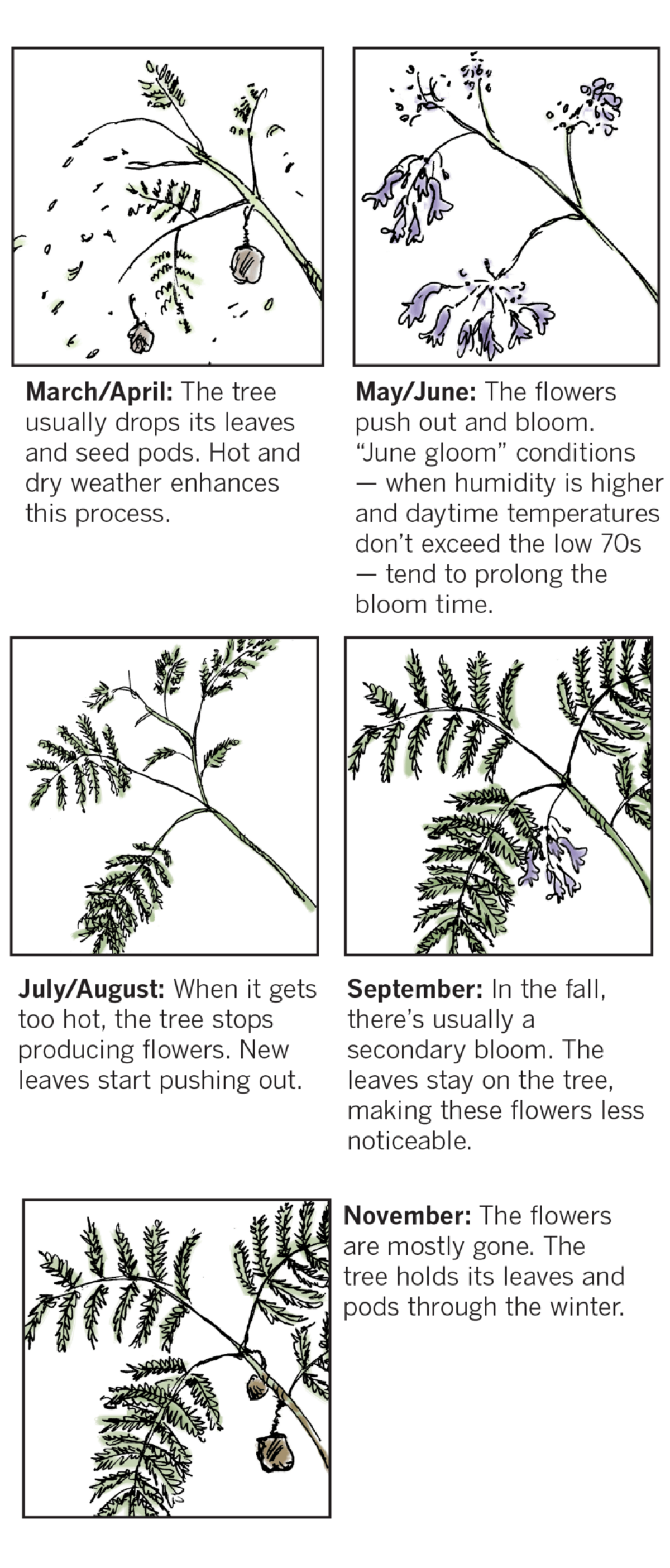
Where you can see jacaranda trees
Some of the many popular places for viewing the color include: Paloma Street in Pasadena; Del Mar Boulevard in Pasadena; Stansbury Avenue in Sherman Oaks; Gothic Avenue in North Hills; North Whittier Drive in Beverly Hills; Index Street in Granada Hills; Los Robles Avenue in San Marino; and older residential streets in Hollywood.
Sources: L.A. County Arboretum and Botanic Garden, Donald R. Hodel of the UC Cooperative Extension, Huntington Botanical Gardens, L.A. City Bureau of Street Services, Pasadena Urban Forestry program, Cal Poly Urban Forest Ecosystems Institute, Times reporting by Rosanna Xia.
More to Read
Sign up for Essential California
The most important California stories and recommendations in your inbox every morning.
You may occasionally receive promotional content from the Los Angeles Times.
